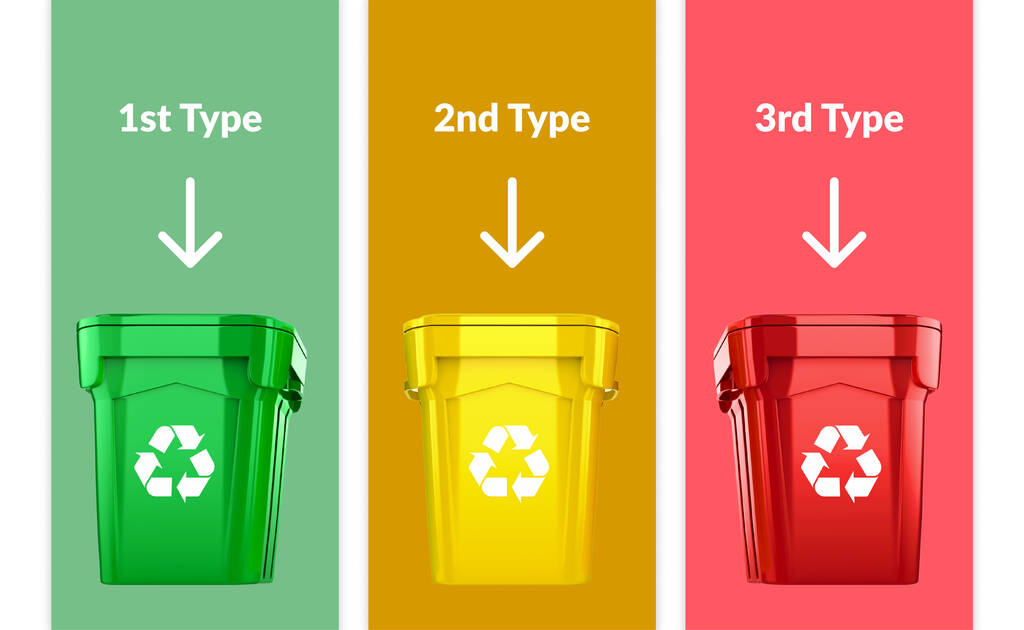
Recycling is the process of converting waste materials into new products to prevent their disposal in landfills, incineration, or the environment. This reduces the consumption of new raw materials, saves energy, and reduces pollution. Recycling is an essential practice to reduce the amount of waste generated and its impact on the environment. There are several types of recycling, and in this article, we will discuss the three most common types of recycling methods: mechanical, energy, and chemical.
Types of Recycle
Before delving into the three types of recycling, it is essential to understand the different kinds of recycling. There are mainly two types of recycling:
- Primary Recycling: It involves repeatedly using waste materials to create the same product. For example, reusing old newspapers to make new newspapers.
- Secondary Recycling: It involves using waste materials to create different products. For example, using plastic bottles to make synthetic fiber.
So, what are the 3 types of recycling? Let’s discuss the most popular types of recycling methods below.
Mechanical Recycling
Mechanical recycling is the most common recycling method. It involves collecting, sorting, and processing waste materials such as paper, cardboard, metal, and plastic to produce new products. Mechanical recycling is a cost-effective method of recycling, saving energy and reducing the consumption of new raw materials. The process of mechanical recycling includes the following steps:
- Collection: The first step in mechanical recycling is the collection of waste materials. The waste materials are collected from households, offices, and industrial areas.
- Sorting: Once the waste materials are collected, they are sorted into different categories. For example, plastic bottles are separated from aluminum cans, and cardboard is separated from the paper.
- Processing: After sorting, the waste materials are processed to produce new products. For example, plastic bottles are crushed, cleaned, and melted to create new plastic products such as toys, containers, and furniture.
Mechanical recycling is a required method of recycling, reducing the amount of waste that ends up in landfills. However, mechanical recycling has limitations as it can only recycle materials that can be melted or reshaped, such as glass, metal, and plastic.
Energy Recycling
Energy recycling, also known as waste-to-energy, is a method of recycling that involves converting waste materials into energy. This method of recycling is useful for waste materials that cannot be recycled through mechanical recycling. The process of energy recycling involves the following steps:
- Collection: Waste materials such as food, agricultural, and municipal waste are collected.
- Sorting: The waste materials are sorted to remove non-combustible materials such as metals and glass.
- Combustion: The combustible waste materials are burned to produce heat, which is used to generate electricity.
Energy recycling is an effective method of recycling as it reduces the amount of waste that ends up in landfills and generates electricity. Nevertheless, energy recycling also has limitations as it can release pollutants into the air, which can harm the environment and human health. Therefore, controlling and monitoring the emissions from energy recycling plants to minimize their impact on the environment is essential.
Chemical Recycling
Chemical recycling, also known as feedstock recycling, is a method of recycling that involves converting waste materials into their chemical components or building blocks. The chemical elements can then be used to create new products. Chemical recycling is beneficial for waste materials that cannot be recycled through mechanical or energy recycling. The process of chemical recycling involves the following steps:
- Collection: Waste materials such as plastic waste are collected.
- Sorting: The waste materials are sorted to remove non-plastic materials such as metals and glass.
- Depolymerization: Plastic waste is broken down into its chemical components through depolymerization. Depolymerization is a process that breaks down the long polymer chains in plastics into smaller molecules or monomers. This is done by subjecting plastic waste to high temperatures, pressures, and chemicals.
- Purification: The chemical components obtained from depolymerization are purified to remove impurities or contaminants.
- Repolymerization: The purified chemical components are then used to create new plastic products through repolymerization. Repolymerization involves combining the purified chemical ingredients to form new polymer chains that can be used to create new plastic products.
Chemical recycling is a promising method as it can recycle almost all types of plastics, including those that are difficult to recycle, through mechanical recycling. Chemical recycling can also produce high-quality recycled plastics that can be used to manufacture a wide range of products. At the same time, chemical recycling is a complex and expensive process requiring specialized equipment and expertise.
Types of Waste Recycling
Recycling is more comprehensive than just the three methods discussed above. There are several types of waste recycling, including:
- Composting: Composting is a method of recycling organic waste, such as food and garden waste, into nutrient-rich soil amendments. The process involves breaking down organic waste through natural decomposition to create compost.
- Textile Recycling: Textile recycling involves collecting and processing used clothing and textiles to create new products or materials.
- Electronic Waste Recycling: Electronic waste recycling involves collecting and processing electronic waste, such as computers, phones, and televisions, to recover valuable metals and components and prevent them from ending up in landfills.
- Construction and Demolition Waste Recycling: Construction and demolition waste recycling involve collecting and processing waste materials from construction and demolition sites to create new products or materials.
Conclusion
In the end, recycling is vital to reduce the amount of waste generated and its impact on the environment. There are several methods of recycling, including mechanical recycling, energy recycling, and chemical recycling. Each method has its advantages and limitations and is useful for specific types of waste materials. In addition to these three methods, there are several other types of waste recycling, such as composting, textile recycling, electronic waste recycling, and construction and demolition waste recycling. By adopting these different kinds of recycling, we can reduce the amount of waste that ends up in landfills, save energy, and conserve natural resources.


